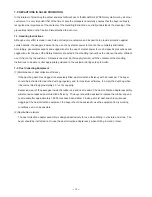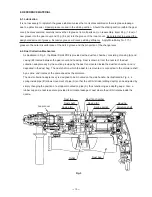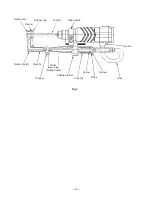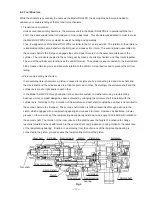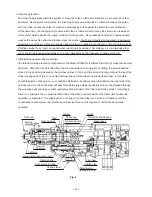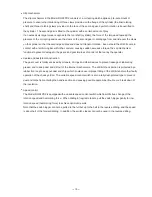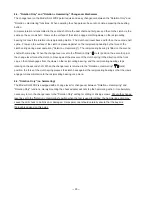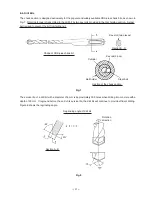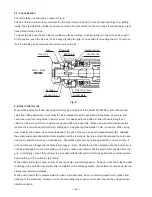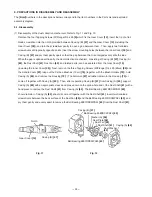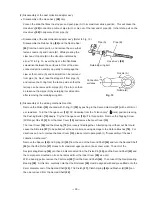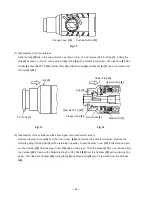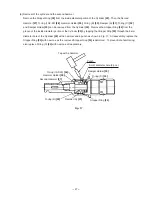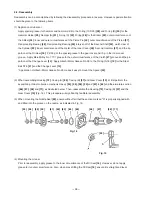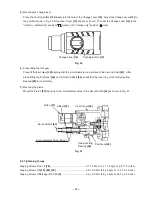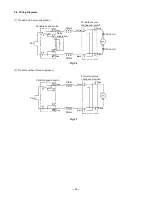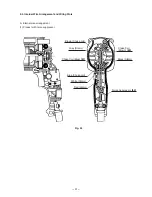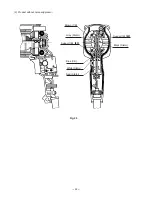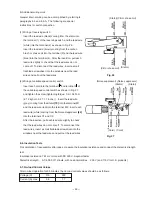
--- 18 ---
Small piston
respiratory hole
Hammering function
The piston reciprocates within the cylinder to move the striker in the same manner as in conventional rotary
hammers. As the piston reciprocates, the changing air pressure inside the air chamber between the piston
and the striker causes the striker to move and continuously strike against the end of the second hammer.
At the same time, the changing air pressure within the air chamber which moves the striker also provides an
"air cushion" which absorbs the impact of the hammering action. As air leakage from the air chamber would
weaken the air-cushion effect and reduce impact absorption, the O-ring (mounted on the striker) is extremely
important to seal the air. Although a special rubber material is utilized in construction of the O-ring to make its
effective service life as long as possible, wear cannot be fully avoided. Accordingly, it is recommended that
the O-ring be replaced approximately once a year, depending on the frequency of usage of the tool.
Idle hammering prevention mechanism
The idle hammering prevention mechanism in the Model DH 24PD2 is different from that of conventional rotary
hammers. When the drill bit is lifted from the concrete surface on completion of drilling, the second hammer
moves to the position indicated by the continuous lines in Fig. 6 and the protruding (lip) portion at the tip of the
striker is gripped by O-ring (C) mounted between the hammer holder and the damper holder. In this state,
should the piston continue to move so that the small piston respiratory hole is blocked by the inner wall of the
cylinder, the air in the air chamber will pass through the large piston respiratory hole and be released through
the air-escape slot and large cylinder respiratory hole provided on the inner wall of the cylinder. Accordingly,
there is no change in the air pressure within the air chamber, and movement of the striker (idle hammering
operation) is prevented. The gripping force of O-ring (C) on the striker is so small in comparison with the
conventional mouth system that practically no pressing force at all is required to restart the hammering
operation.
Piston
Front cap
Striker
Cylinder
Second
hammer
Moving
distance
Second gear
Fig. 6
First gear
Large piston respiratory hole
Claw
Coil spring
Reciprocating bearing
Gear cover
Air-escape slot
Air
chamber
Clutch spring
Second shaft spline
Change lever
Clutch claw
Summary of Contents for DH 24PD2
Page 26: ... 23 Fig 10 Dust collector B structure ...
Page 44: ......











